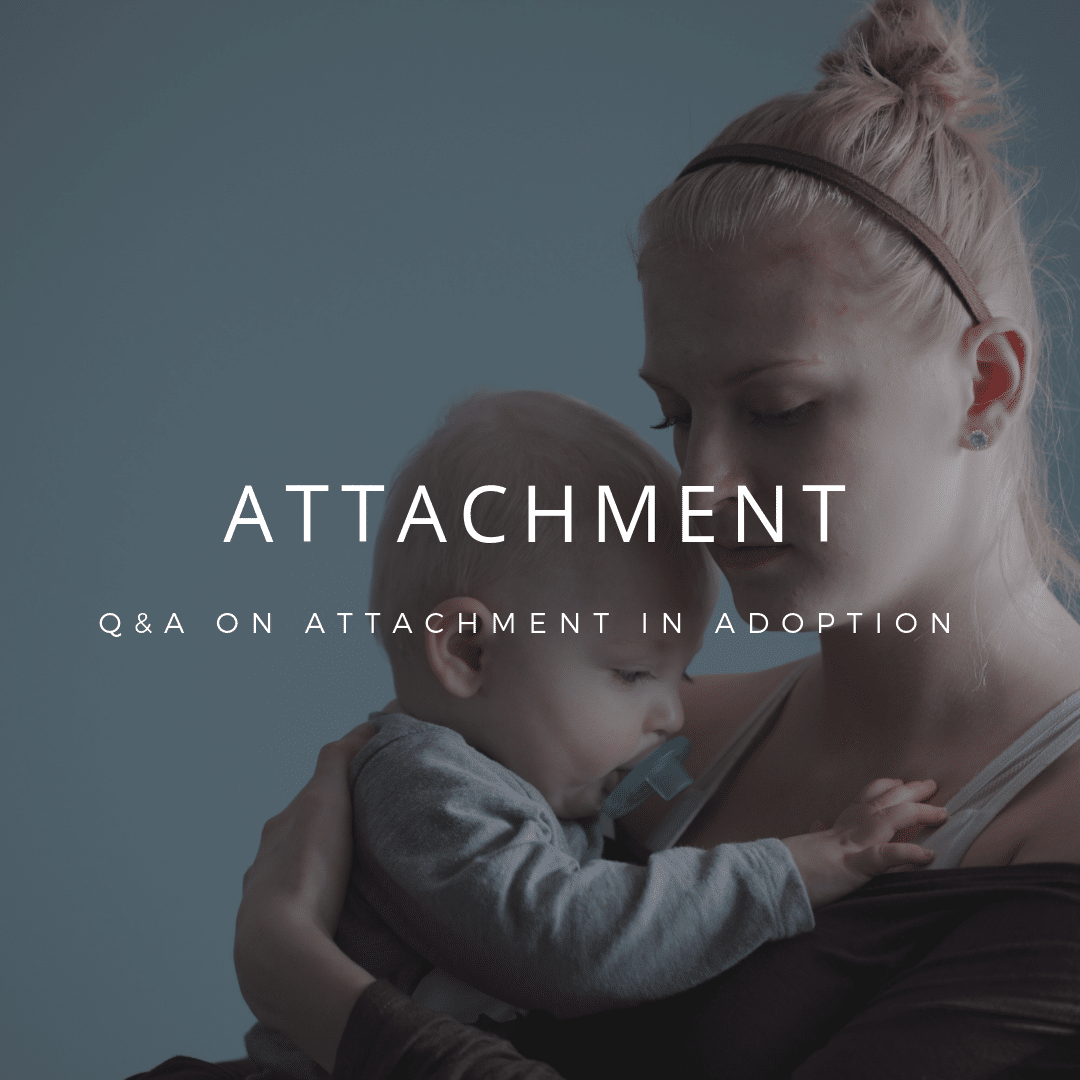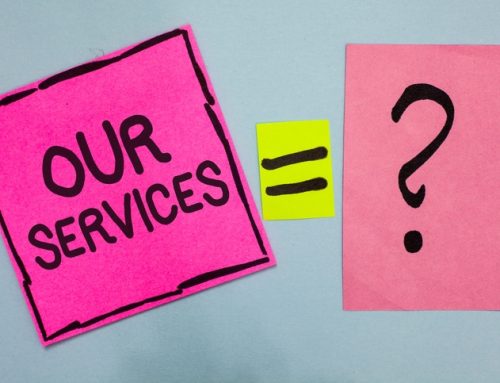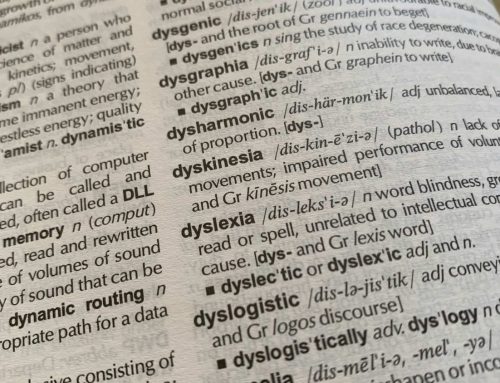
Q & A ~ Katie Zimmerman, Purl Adoption Advisory + Sarah Crawford, PhD, LPC
Sarah Crawford, PhD, LPC, is a child therapist, attachment specialist and a parent coach in Arizona who specializes in working with parents to address issues related to attachment, parent-child relationships, and adoption. She helps parents identify what their unique situation needs, while helping parents deepen trust and strengthen family connections.
We sat down with Sarah to better understand attachment and how attachment concerns can arise in adoption. Here’s what Sarah had to say.
………
Katie: What is attachment, and what do adoptive parents need to know about it?
Sarah: Attachment refers to the type of connection that exists between a child and their primary caregiver(s) — and, more specifically, how this is and has been during the ages of birth to three. The healthier and more secure the attachment is between the child and their caregivers, the better this is for child development. Attachment impacts nearly every aspect of development. Social, emotional, psychological, cognitive, and even physiological development are all hugely shaped by what happens during the earliest years of life.
Katie: What does this mean for children who have been adopted?
Sarah: Children who have been adopted have already experienced one break in an attachment relationship, so it’s important to learn how this impacted them. Sometimes, a transition can be relatively easy, and a connection with adoptive parents can come quickly, and other times it can be stressful. Each situation is different, and each child interprets and experiences a situation in different ways.
Katie: Why is this important?
Sarah: The attachment relationship is so very important because this literally informs the development of the nervous system, which informs emotion regulation, sleep, psychological development, learning, and more. When infants, toddlers, and young children have a healthy, secure attachment relationship, they pursue normal developmental tasks. When or if they don’t, the body is worried about finding security, therefore unable to develop to it’s highest potential. When very young children experience “toxic stress,” which is stress that is higher than healthy or normal ranges, it damages developing systems. Some children won’t show symptoms, while other children will.
Katie: What signs or symptoms would I see if my child is having problems related to attachment?
Sarah: Anxiety, clinginess, excessive crying or whining, fears, resistance to cooperating, aggression, anger, and avoidance are some of the things you would see. Some of these things happen anyway, in healthy development, so the key here is to notice if these are happening more than what is considered “normal range.” If you think your child is in distress, there is a problem. Normal resistance to learning and trying new things is nothing to worry about, but if you think your child looks like they are in “toxic stress zone,” which would be a higher level of just plain regular stress, it would be a good idea to speak with a specialist.
Katie: I’ve read all the parenting books, and I’m pretty sure I’m using great parenting strategies, but my child is still anxious, aggressive, or resistant. What’s going on?
Sarah: Many times I work with parents who are using perfectly acceptable parenting strategies, but they aren’t helping a particular child. One reason this may be happening is that the child is needing something different, possibly a therapeutic parenting response, as opposed to a regular, standard, parenting strategy. This could be because a child needs something different than the parent is able to recognize, or… and this is really common: the parenting may be giving the child what would help the parent, if they were in that situation, but this may not be what can help this particular child. Each person has different preferences, levels of sensitivity, personality types, etc., and it is crucial to understand what the parents are, what the child’s are, and how these intermix. This is what we call Goodness of Fit. Goodness of Fit refers to if children and parents get each other easily, or if some tweaking is needed to understand each other and meet needs, and how these things vary in different circumstances.
Katie: How do I know if my child or my family needs help?
Sarah: Some stress and struggle is necessary for growth, but if a child is crying or tantrumming beyond what is considered normal, and/or is not able to use a parent as a resource for getting help and feeling safe and secure, it would be a good idea to meet with an attachment specialist and have an assessment. If children are experiencing signs of stress, like nervousness, separation anxiety, aggression, anger, fear, sleeplessness, or restlessness that go beyond what is typical in a group of healthy peers, it would be a great idea to learn more about what is happening.
Katie: What is Reactive Attachment Disorder, and what are some signs of it?
Sarah: RAD is a term that refers to a child who is having a very, very hard time receiving help from caregiving adults, and this is most often because the child has had very challenging early experiences that led to toxic stress and overwhelm. Relational Trauma is an injury, like any other type of trauma. It is the result of a person being overwhelmed with fear, stress, or pain.
Signs that children may have experienced a very intense relational trauma can include: shyness, fears, phobias, anxiety, withdrawing, lashing out, aggression, fury, rages, manipulative behavior, lying, stealing, sleeplessness, nightmares or night terrors, problems with focus or concentration, learning problems, self-harming behavior, low self-esteem, self-hate, helplessness, and/or hopelessness.
Katie: If I think my child might have RAD or any other symptoms of relational trauma, how can I help them?
Sarah: Know that the symptoms your child is presenting with might be the result of negative experiences from the past (even in utero). Even if you think you know your child’s history, remember that what matters here is how THEY perceived and/or experienced it. For example, loud noises can be annoying for adults, but traumatic for infants, depending on the situation. Children are more sensitive and vulnerable the younger they are, so instability in the earliest days can actually have a quite significant impact.
It is also important to know that many children don’t show signs of trauma while they are experiencing it. This is because the body’s first priority is to keep itself safe. Many children “freeze” when experiencing high levels of stress. This helps to explain why symptoms might not show themselves until later.
Many parents with children who have symptoms like these feel hurt and rejected because they are trying to help and want to bond and support, but the child appears to be pushing them away. This can be so hurtful for parents. Try to recognize that their behavior might be the symptoms of an injury. If having more compassion and more patience isn’t working, meet with a professional who can help you determine what’s going on.
Katie: Can you explain your role as a child therapist/parent coach?
Sarah: I help parents learn how they can best help their unique children. I work with parents, provide in-home assessments, share my impressions, and give recommendations for parenting strategies they can use to address specific issues. I help parents use these strategies to address, heal, and repair breaks that may have occurred in attachment relationships – past or present. Through this work, parents help to heal injuries and also, really importantly, invest into the relationship they have with their children, which in turn, can pay off in spades, throughout years to come.
Katie: How can coaching or attachment-focused therapy help?
Sarah: It can a) be a source of support for parents, who are very often feeling stressed. b) It gives families an objective, unbiased person to consult with, and c) one who is trained and up on the research about attachment, and trauma, and child development. d) And, a good coach or therapist can help parents with the process. Once you understand what’s happening and learn what may or may not help, it takes tinkering to get connection and then develop the healthy parent-child connection. A therapist or coach can help to expedite this process greatly. This is so important, given that development happens quickly during childhood. Development also occurs according to what’s happening in their surroundings, so it is so important to address any relationship-based issues as early as possible.
To learn more about Sarah and her practice, please visit her website.

Q & A ~ Katie Zimmerman, Purl Adoption Advisory + Sarah Crawford, PhD, LPC
Sarah Crawford, PhD, LPC, is a child therapist, attachment specialist and a parent coach in Arizona who specializes in working with parents to address issues related to attachment, parent-child relationships, and adoption. She helps parents identify what their unique situation needs, while helping parents deepen trust and strengthen family connections.
We sat down with Sarah to better understand attachment and how attachment concerns can arise in adoption. Here’s what Sarah had to say.
………
Katie: What is attachment, and what do adoptive parents need to know about it?
Sarah: Attachment refers to the type of connection that exists between a child and their primary caregiver(s) — and, more specifically, how this is and has been during the ages of birth to three. The healthier and more secure the attachment is between the child and their caregivers, the better this is for child development. Attachment impacts nearly every aspect of development. Social, emotional, psychological, cognitive, and even physiological development are all hugely shaped by what happens during the earliest years of life.
Katie: What does this mean for children who have been adopted?
Sarah: Children who have been adopted have already experienced one break in an attachment relationship, so it’s important to learn how this impacted them. Sometimes, a transition can be relatively easy, and a connection with adoptive parents can come quickly, and other times it can be stressful. Each situation is different, and each child interprets and experiences a situation in different ways.
Katie: Why is this important?
Sarah: The attachment relationship is so very important because this literally informs the development of the nervous system, which informs emotion regulation, sleep, psychological development, learning, and more. When infants, toddlers, and young children have a healthy, secure attachment relationship, they pursue normal developmental tasks. When or if they don’t, the body is worried about finding security, therefore unable to develop to it’s highest potential. When very young children experience “toxic stress,” which is stress that is higher than healthy or normal ranges, it damages developing systems. Some children won’t show symptoms, while other children will.
Katie: What signs or symptoms would I see if my child is having problems related to attachment?
Sarah: Anxiety, clinginess, excessive crying or whining, fears, resistance to cooperating, aggression, anger, and avoidance are some of the things you would see. Some of these things happen anyway, in healthy development, so the key here is to notice if these are happening more than what is considered “normal range.” If you think your child is in distress, there is a problem. Normal resistance to learning and trying new things is nothing to worry about, but if you think your child looks like they are in “toxic stress zone,” which would be a higher level of just plain regular stress, it would be a good idea to speak with a specialist.
Katie: I’ve read all the parenting books, and I’m pretty sure I’m using great parenting strategies, but my child is still anxious, aggressive, or resistant. What’s going on?
Sarah: Many times I work with parents who are using perfectly acceptable parenting strategies, but they aren’t helping a particular child. One reason this may be happening is that the child is needing something different, possibly a therapeutic parenting response, as opposed to a regular, standard, parenting strategy. This could be because a child needs something different than the parent is able to recognize, or… and this is really common: the parenting may be giving the child what would help the parent, if they were in that situation, but this may not be what can help this particular child. Each person has different preferences, levels of sensitivity, personality types, etc., and it is crucial to understand what the parents are, what the child’s are, and how these intermix. This is what we call Goodness of Fit. Goodness of Fit refers to if children and parents get each other easily, or if some tweaking is needed to understand each other and meet needs, and how these things vary in different circumstances.
Katie: How do I know if my child or my family needs help?
Sarah: Some stress and struggle is necessary for growth, but if a child is crying or tantrumming beyond what is considered normal, and/or is not able to use a parent as a resource for getting help and feeling safe and secure, it would be a good idea to meet with an attachment specialist and have an assessment. If children are experiencing signs of stress, like nervousness, separation anxiety, aggression, anger, fear, sleeplessness, or restlessness that go beyond what is typical in a group of healthy peers, it would be a great idea to learn more about what is happening.
Katie: What is Reactive Attachment Disorder, and what are some signs of it?
Sarah: RAD is a term that refers to a child who is having a very, very hard time receiving help from caregiving adults, and this is most often because the child has had very challenging early experiences that led to toxic stress and overwhelm. Relational Trauma is an injury, like any other type of trauma. It is the result of a person being overwhelmed with fear, stress, or pain.
Signs that children may have experienced a very intense relational trauma can include: shyness, fears, phobias, anxiety, withdrawing, lashing out, aggression, fury, rages, manipulative behavior, lying, stealing, sleeplessness, nightmares or night terrors, problems with focus or concentration, learning problems, self-harming behavior, low self-esteem, self-hate, helplessness, and/or hopelessness.
Katie: If I think my child might have RAD or any other symptoms of relational trauma, how can I help them?
Sarah: Know that the symptoms your child is presenting with might be the result of negative experiences from the past (even in utero). Even if you think you know your child’s history, remember that what matters here is how THEY perceived and/or experienced it. For example, loud noises can be annoying for adults, but traumatic for infants, depending on the situation. Children are more sensitive and vulnerable the younger they are, so instability in the earliest days can actually have a quite significant impact.
It is also important to know that many children don’t show signs of trauma while they are experiencing it. This is because the body’s first priority is to keep itself safe. Many children “freeze” when experiencing high levels of stress. This helps to explain why symptoms might not show themselves until later.
Many parents with children who have symptoms like these feel hurt and rejected because they are trying to help and want to bond and support, but the child appears to be pushing them away. This can be so hurtful for parents. Try to recognize that their behavior might be the symptoms of an injury. If having more compassion and more patience isn’t working, meet with a professional who can help you determine what’s going on.
Katie: Can you explain your role as a child therapist/parent coach?
Sarah: I help parents learn how they can best help their unique children. I work with parents, provide in-home assessments, share my impressions, and give recommendations for parenting strategies they can use to address specific issues. I help parents use these strategies to address, heal, and repair breaks that may have occurred in attachment relationships – past or present. Through this work, parents help to heal injuries and also, really importantly, invest into the relationship they have with their children, which in turn, can pay off in spades, throughout years to come.
Katie: How can coaching or attachment-focused therapy help?
Sarah: It can a) be a source of support for parents, who are very often feeling stressed. b) It gives families an objective, unbiased person to consult with, and c) one who is trained and up on the research about attachment, and trauma, and child development. d) And, a good coach or therapist can help parents with the process. Once you understand what’s happening and learn what may or may not help, it takes tinkering to get connection and then develop the healthy parent-child connection. A therapist or coach can help to expedite this process greatly. This is so important, given that development happens quickly during childhood. Development also occurs according to what’s happening in their surroundings, so it is so important to address any relationship-based issues as early as possible.
To learn more about Sarah and her practice, please visit her website.



